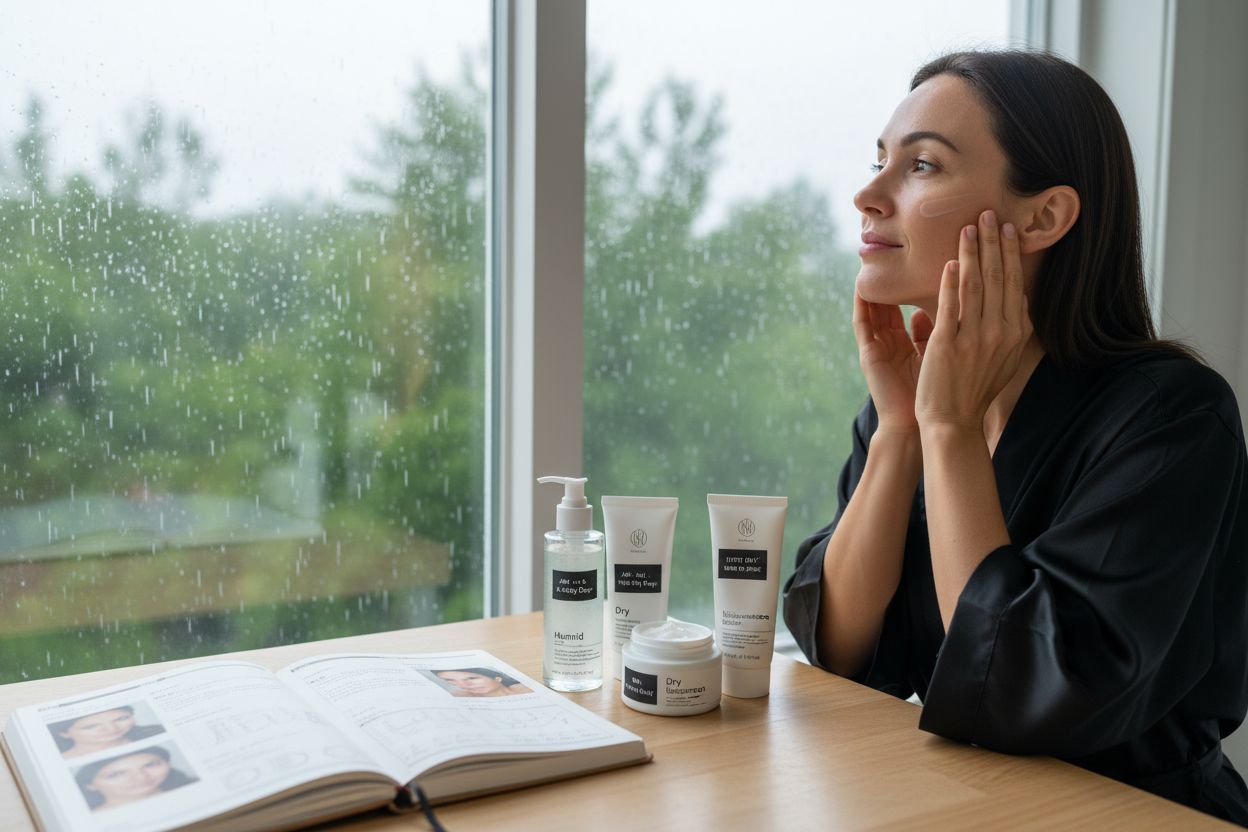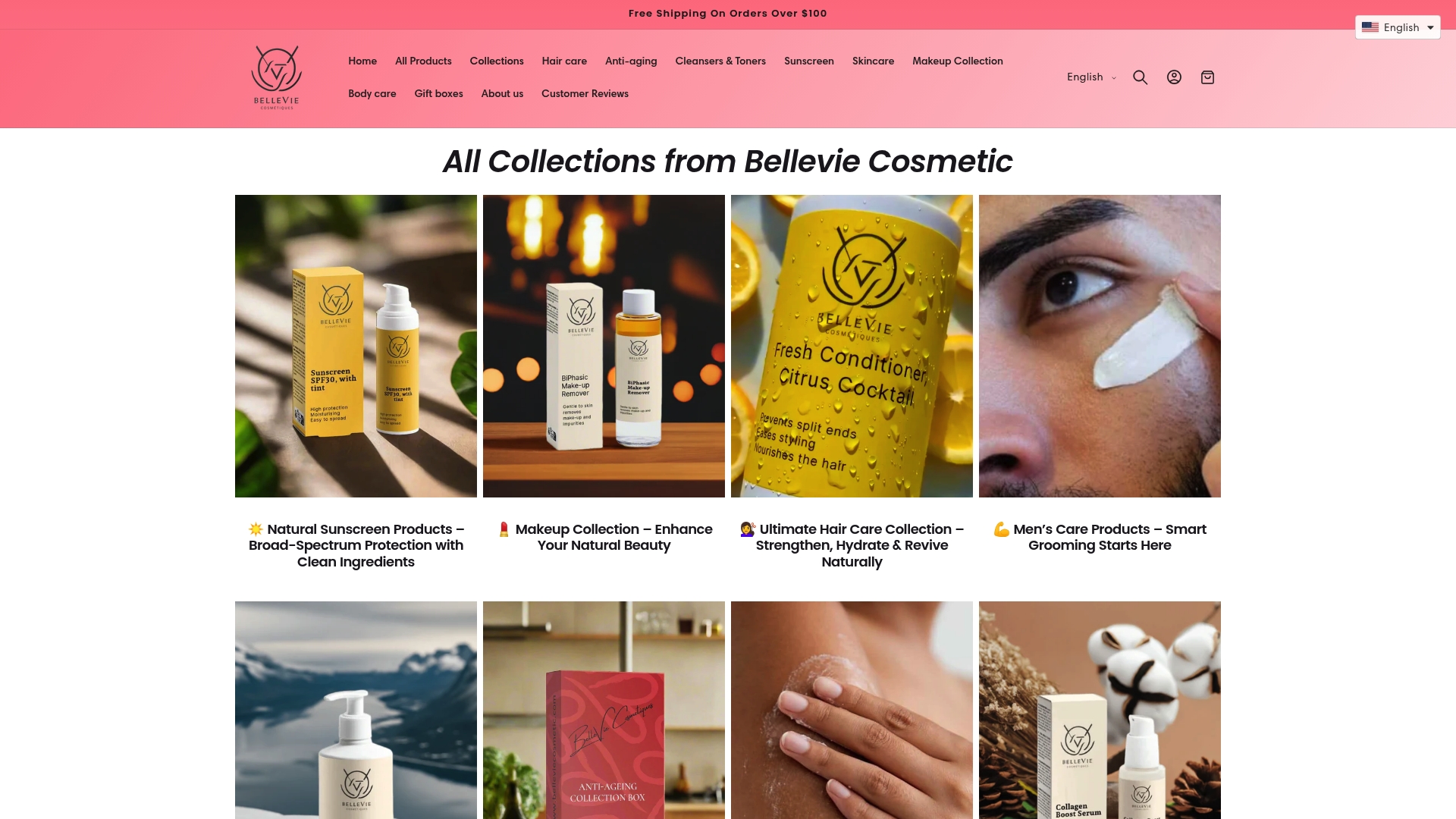Did you know that a rise of just 2 degrees Celsius may increase UV-related skin damage by about 10 percent? Weather patterns where you live quietly shape everything from dryness to breakouts. Tailoring your skincare to match your climate and skin type makes your routine work better for you. Discover how simple shifts can help you protect your skin and keep it healthy through every season.
Quick Summary
| Key Point | Explanation |
|---|---|
| 1. Understand Your Local Climate | Assessing environmental conditions helps tailor your skincare routine to combat specific challenges effectively. |
| 2. Identify Your Skin Type | Knowing whether your skin is oily, dry, or sensitive is essential for selecting the right products and routines. |
| 3. Choose Climate-Appropriate Ingredients | Prioritize active ingredients like antioxidants and humectants that can protect against environmental stressors. |
| 4. Adjust Routine for Seasonal Changes | Modify your products seasonally to align with temperature and humidity levels, ensuring optimal skin health year-round. |
| 5. Monitor Skin Responses Regularly | Keep a skincare journal to track and adjust your routine based on texture changes, breakouts, and external factors. |
Table of Contents
- Step 1: Assess Your Local Climate For Skin Needs
- Step 2: Evaluate Your Skin Type And Sensitivities
- Step 3: Select Clean Ingredients Aligned With Climate
- Step 4: Adjust Routine Steps For Seasonal Changes
- Step 5: Test And Monitor Results For Optimal Care
Step 1: Assess Your Local Climate for Skin Needs
Understanding your local climate is the foundation of creating a personalized skincare strategy that protects and nurtures your skin. Think of your skin as a living ecosystem that responds uniquely to environmental conditions—what works in Phoenix will look very different from a routine in Seattle.
Start by identifying your specific climate zone: Are you experiencing hot and humid summers with muggy afternoons? Dry desert conditions with intense sun exposure? Cold winters with harsh indoor heating? According to research from ISDIN, each climate type dramatically impacts skin health and requires tailored approaches.
For humid environments, expect increased oil production and potential breakout risks. Your skin will need lightweight, non comedogenic moisturizers that balance hydration without clogging pores. In dry climates, focus on rich barrier repair products that combat flakiness and sensitivity.
Here’s a comparison of how different climate types impact your skin and the recommended skincare approaches:
![]()
| Climate Type | Main Skin Challenges | Recommended Products |
|---|---|---|
| Humid & Hot | Excess oil Breakouts |
Lightweight moisturizer Non-comedogenic formula |
| Dry & Arid | Flakiness Sensitivity |
Rich barrier creams Hydrating serums |
| Cold & Heated | Dryness Tightness |
Thick moisturizers Ceramide-rich creams |
| High UV Exposure | Sun damage Premature aging |
Broad-spectrum sunscreen Antioxidant serums |
Pro Tip: Track your skin’s response across different seasons. Take monthly photos and note texture changes, breakouts, or dry patches.
Especially critical is understanding UV exposure. UC San Diego research warns that rising temperatures can amplify skin damage—with each 2°C temperature increase potentially boosting UV harm by approximately 10%. This means your sunscreen isn’t just a summer accessory but a year round necessity.
Ready to design your climate smart skincare routine? The next step will help you map out precise product selections that work harmoniously with your local environmental conditions.
Step 2: Evaluate Your Skin Type and Sensitivities
Knowing your skin type is like having a personal roadmap to effective skincare. Each skin type reacts uniquely to environmental changes—making personalized care essential for maintaining healthy, resilient skin.
Start with a simple at home assessment. Cleanse your face and wait one hour without applying any products. Observe how your skin feels: Does it look shiny and feel greasy? Feel tight and flaky? Appear combination with some areas oily and others dry? According to Oxygen Clinic research, skin types respond dramatically differently to climate stressors.
Oily skin types might see increased sebum production during hot weather while dry skin requires constant barrier support. Combination skin demands flexible routines that address multiple concerns simultaneously. Sensitive skin is particularly vulnerable—reacting quickly to environmental shifts and potential irritants.
Warning: Introduce new skincare products gradually to understand how your skin responds to changing conditions.
Harvard Medical School research highlights that environmental factors like wildfire smoke can trigger skin reactions especially in sensitive individuals. This means your skincare routine must be adaptable and responsive.
Pay attention to how your skin changes across seasons. Take monthly notes about texture shifts breakouts or sensitivity triggers.
 Your skin is a living ecosystem that communicates its needs through subtle signals.
Your skin is a living ecosystem that communicates its needs through subtle signals.
Ready to dive deeper? The next step will help you craft a targeted skincare strategy that works with your unique skin profile.
Step 3: Select Clean Ingredients Aligned with Climate
Crafting a skincare routine that adapts to your environment means choosing ingredients that work like intelligent shields for your skin. Your product selections become your first line of defense against climate related challenges.
Focus on powerhouse ingredients that support skin resilience. National Geographic research highlights that antioxidant serums and ceramide rich moisturizers can effectively protect against environmental stressors like air pollution and UV exposure.
Key protective ingredients to prioritize include hyaluronic acid for deep hydration green tea extract for antioxidant protection squalane for barrier repair and mineral based sunscreens for comprehensive defense. According to Kristina Markovic research, these ingredients help maintain skin integrity under challenging environmental conditions.
Pro Tip: Layer your antioxidant serum under moisturizer and sunscreen for maximum environmental protection.
Natural botanicals like aloe and chamomile offer additional soothing benefits particularly for sensitive skin experiencing climate induced stress. Vitamin C and algae extracts provide extra protection against oxidative damage making them excellent additions to your climate adaptive skincare arsenal.
Prepare to transform your skincare from a passive routine to an active defense mechanism against environmental challenges. Your next step will involve understanding how to strategically apply these ingredients for optimal results.
Step 4: Adjust Routine Steps for Seasonal Changes
Skincare is not a one size fits all approach especially when seasons shift dramatically. Your skin needs a flexible strategy that responds intelligently to changing environmental conditions.
According to Byrdie research, dermatologists recommend specific product adjustments throughout the year. Warm humid months call for lightweight water based moisturizers that manage excess oil and prevent breakouts. Winter and fall demand richer ceramide or shea butter based formulations to combat moisture loss and protect your skin barrier.
Following Oxygen Clinic insights, each season offers unique skincare opportunities. Spring becomes about gentle exfoliation and introducing antioxidant serums. Summer prioritizes lightweight hydration and robust sun protection. Fall is your restoration period focusing on rebuilding skin barriers with lipid rich products. Winter requires strategic layering of hydrating essences serums and creams.
Pro Tip: Always apply products on slightly damp skin to lock in maximum hydration.
Consider your skincare routine like a wardrobe that adapts to temperature shifts. Just as you would not wear a heavy winter coat in summer your skincare products should similarly transform. Lightweight gel creams replace rich oils lightweight serums become your primary hydration method and sun protection becomes non negotiable.
Ready to become a skincare climate chameleon? Your next step involves creating a personalized seasonal transition plan that keeps your skin resilient and radiant.
Step 5: Test and Monitor Results for Optimal Care
Tracking your skin’s response to environmental changes is like being a detective for your personal health. Your skin communicates through subtle signals that require consistent observation and thoughtful interpretation.
Byrdie research emphasizes the critical importance of monitoring seasonal skin changes and being willing to adjust your routine accordingly. Start by creating a skincare journal documenting texture changes breakouts hydration levels and overall skin appearance across different environmental conditions.
A groundbreaking US research study reveals fascinating connections between environmental triggers mental stress and skin inflammation. This means tracking not just physical symptoms but also your emotional well being can provide comprehensive insights into your skin’s health.
Pro Tip: Take weekly progress photos in consistent lighting to objectively track skin changes.
Pay attention to how your skin responds to new products climate shifts and stress levels. Look for signs like increased sensitivity unexplained breakouts changes in texture or unexpected dryness. These are your skin’s way of communicating that something in your current routine needs adjustment.
Remember that personalized skincare is a journey of continuous learning and adaptation. Be patient with yourself and view each observation as valuable data that helps you understand your unique skin story.
Adapt Your Skin Care Routine to Your Climate—Naturally
Are you tired of trying routines that ignore your local weather, leaving your skin dull or irritated? This article revealed that understanding your climate and skin type is key to real results. If you are struggling with dryness in the winter, breakouts in humidity, or increased sensitivity from changing seasons, you need products that adapt and protect. Just like you learned about using clean ingredients and monitoring seasonal changes, Belle Vie Cosmetic offers solutions that match your needs every step of the way. Explore our natural and organic skincare collections, including antioxidant serums, barrier creams, and mineral SPF, made for every climate and skin concern.

Ready to build a climate-smart, personalized skincare ritual? Make your first stop BelleVieCosmetic.com. Find the science-backed products that fit your routine right now and enjoy fast US shipping plus a free skincare gift when you make your first order. Start your journey to real, lasting skin health today.
Frequently Asked Questions
How can I assess which climate zone I’m in for skincare?
Understanding your local climate is essential for tailoring your skincare routine. Identify your climate type by observing seasonal weather patterns—such as humidity levels, temperature swings, and sun exposure—then adapt your products to address specific skin challenges posed by that climate.
What should I consider if I have sensitive skin in a changing environment?
If you have sensitive skin, it’s crucial to monitor how your skin reacts to environmental variations, like temperature changes or air quality. Introduce new products slowly and keep a log of any reactions you experience to help adjust your routine effectively.
How do I choose the right ingredients for my skincare routine based on the climate?
Select ingredients that cater to your climate challenges—for instance, use lightweight, non-comedogenic products for humid climates and rich, hydrating formulations in dry conditions. Focus on power ingredients like hyaluronic acid and ceramide-rich creams to enhance skin resilience and hydration.
What are the recommended skincare adjustments for different seasons?
Adjust your skincare routine for each season: use lightweight moisturizers in summer, rich creams in winter, and introduce antioxidant serums in spring. This approach will help address specific seasonal skin needs and enhance overall skin health effectively.
How can I track my skin’s response to different climates and products?
Maintain a skincare journal to document your skin’s condition, including texture changes, breakouts, and overall hydration. Review your notes every month to identify patterns and make informed adjustments to your routine based on your observations.
How long should I give new skincare products to show results based on my climate?
Allow at least 30–60 days to see how new skincare products perform under your specific climate conditions. This timeframe will give your skin enough time to adjust and reveal any changes in texture, hydration, or sensitivity, helping you decide if the product works for you.
